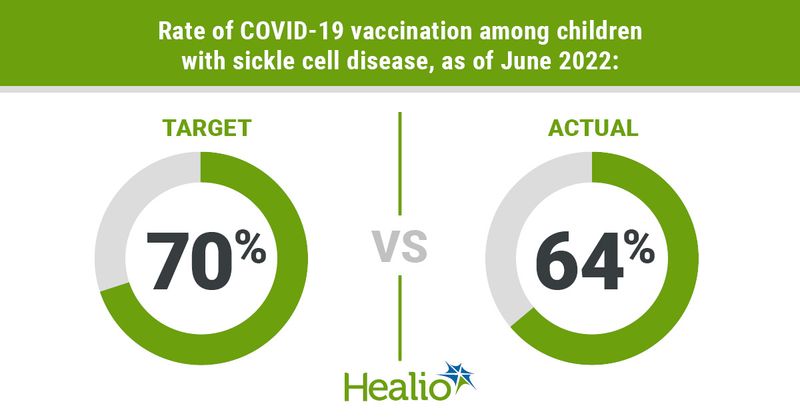Outreach increases COVID-19 vaccination among children with sickle cell disease
Key takeaways:
- Outreach by text messages and phone calls improved vaccination rates among children with sickle cell disease.
- Researchers plan to expand their work to include COVID-19 booster shots and younger patients.
Outreach efforts in the form of text messages and phone calls succeeded in increasing COVID-19 vaccination among children with sickle cell disease, according to a study published in Pediatrics.
“Children with significant comorbidities such as sickle cell disease (SCD) are at an increased risk of adverse outcomes if infected with COVID-19,” Adam P. Yan, MD, a staff oncologist and assistant professor of pediatrics at The Hospital for Sick Children in Toronto, and colleagues wrote.

“COVID-19 can also trigger acute pain episodes and acute chest syndrome, leading to significant morbidity for patients with SCD,” they wrote. “Given the increased vulnerability of patients with SCD to severe COVID-19, it is important to promote measures to protect patients with SCD from COVID-19.”
Yan and colleagues conducted a quality improvement project aimed at increasing the proportion of children with SCD who received two or more COVID-19 vaccine doses to at least 70% by June 2022, which they said would be a vaccine uptake similar to that in a matched cohort of children without SCD. The study included 243 children aged at least 5 years at Boston Children’s Hospital in Massachusetts.
The researchers examined vaccination rates on a biweekly basis and used missed clinic appointments as a balancing measure. They designed three plan-do-study-act cycles incorporating text messages encouraging vaccination, phone calls offering vaccination appointments and promotional videos encouraging vaccination sent via text.
They also emailed hematology providers monthly reports with their patients’ vaccination statuses and encouraged them to discuss vaccination with patients who were not fully vaccinated.
The study spanned 9 months and was divided into a pre-intervention period from September 2021 to January 2022 and an intervention period from February to June 2022. During the preintervention period, overall vaccination rates in children with SCD increased from 33% to 41%, and during the intervention period the rates further increased from 41% to 64%. The mean vaccination rate in eligible children for each 2-week period increased from 2.1% to 7.2%.
The researchers also found that patients with SCD achieved a vaccination rate that was 11% greater than predicted. This was in comparison with the general population, which was found to have a vaccination rate 23% lower than predicted.
In terms of outreach, 13.5% of patients booked a vaccine during an outreach call, whereas 15% declined. Also, 40% of patients watched the promotional video for the COVID-19 vaccine. The researchers did not observe a change in the proportion of missed visits (9% vs. 9.6%).
“A significant number of patients with SCD are not vaccinated against COVID-19,” the authors wrote. “Targeting misinformation and improving vaccine access aided in increasing vaccination. Additional interventions are needed as a large number of patients remain unvaccinated.”
The authors said they will expand their work to include COVID-19 booster shots, patients aged between 6 months and 5 years, and patients in other programs who are at a high risk for COVID-19.

